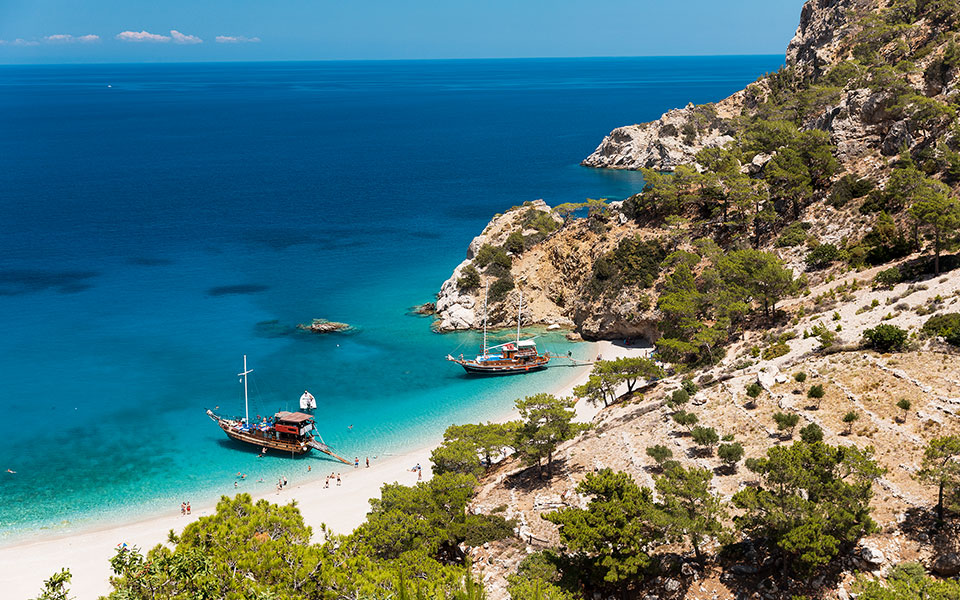It’s around lunchtime in London and the oppressive heat and humidity has sunk Regent’s Park into an unusual state of lethargy. Among all the pale bodies lying on the grass, slightly tipsy with beer, there’s one that’s yearning to escape – mine. A sudden breeze turns my sarong into a magic carpet that whisks me off to the southeastern Aegean, to fly circles above the lobster claw that is the island of Karpathos.
It’s mid-August and I land right in the middle of a party. August is a cursed time for most travelers looking for a truly enjoyable vacation, but on Karpathos it’s a month that’s revered. The villages come to life, as former natives scattered by the four winds as far away as America and Australia return home. I’m a complete stranger, yet I’m treated like an honored guest: the one that deserves a seat next to the band, whose glass is never allowed to be empty, who’s constantly plied with tasty meze.
Also, alas, the one who is exalted on the dance floor as I attempt the traditional local dance, the pidichtos – no matter that everyone within a one-meter radius returns to their seats limping. It’s coming on dawn and the lyre is still going strong, stopping my departure with an old mantinada (narrative song) directed at me: “Where off do you slink? I won’t let you go. We’ll sit here till dawn as I drink.” I wonder: Will there be any church festivals this year? What kind of protocols will they have to follow? I like to believe that the festivals will take place.
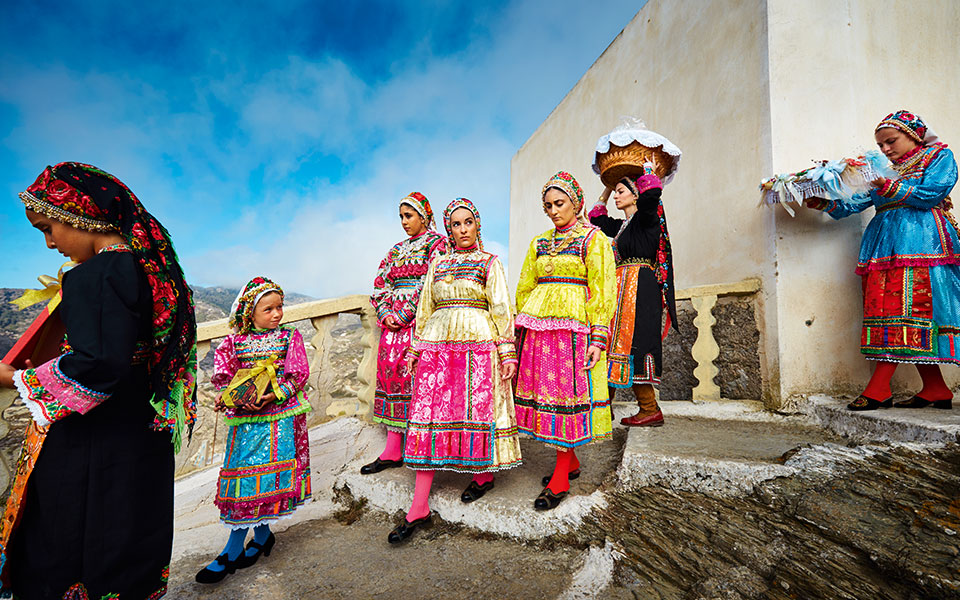
© Nicholas Mastoras
My attachment to Karpathos doesn’t go back years, and I don’t know it like the back of my hand. Yet, oddly enough, it is the only place I genuinely miss. Legend has it that the island’s first residents were not called Karpatheoi but Arpatheoi, or “God-Grabbers,” as an overzealous love for their island prompted them to kidnap the gods from Olympus and bring them here. If it’s true, they were doing them a favor. If you were a god, this is exactly where you’d want to have a summer home, somewhere wild and inaccessible. Not to mention that they’d feel right at home with an “Olympus” of sorts right here.
Karpathos’ Olympos is a village that, for centuries, was a self-governing matriarchal community, practically shut off from the rest of the island with no road access or power until the late 1970s. Late afternoon is the best time to visit this colorful medieval village, when it’s winding down and you get the calm you need to really observe this different world and take in those stark figures in traditional dress, with work-hardened hands and weather-beaten faces going back to their baking, their weaving and their other tasks.
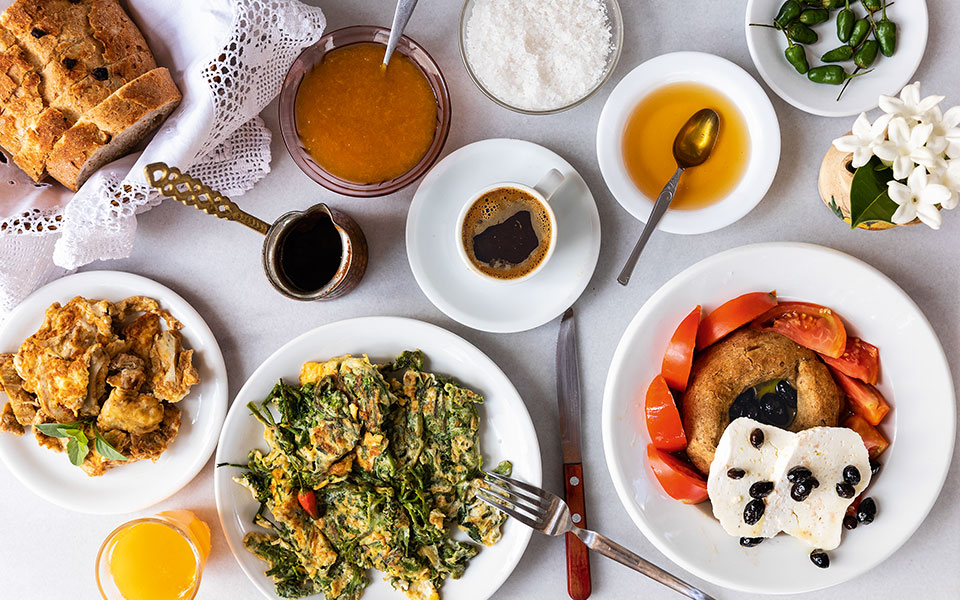
© Nicholas Mastoras
By the time I make my way to the taverna Mylos to watch the sunset from the last working windmill in Olympos, the people of the village will be in bed. As I leave, the light from small vigil lamps in front of religious icons flickers through the windows of the darkened one-room houses, harking back to a time when the village was illuminated only by oil lamps. My plan for my next visit to Karpathos has been ready for some time – I will do things I didn’t do before and repeat the ones I did – even though I know that there’s absolutely no sense in planning.
The days will simply work themselves out, starting with the important things: What time will the bonetis , a dense cloud that descends on the mountains of Karpathos, cover the sky? Will we watch it do its thing from Menetes, munching on sesame bread rings from the bakery? Is the wind right at Afiarti for surfing? How many portions of dolmades does Marina have left at her taverna in Finiki? How much fish did the Ai-Giorgis caique bring in for the taverna Folia in Spoa? Will we go straight from the beach to the village fair, or shower and change first?
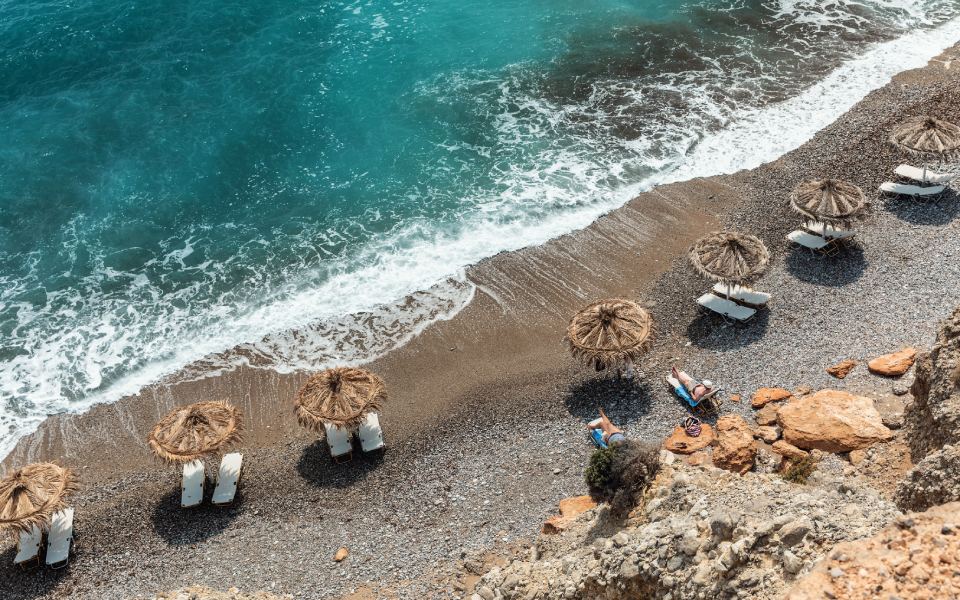
© Nicholas Mastoras
SWIMMING AND STORIES
A quick bag check before we head to the beach: Sunscreen, water flask, mask and snorkel – check; hiking boots – someone is bound to tell us about some amazing trail that cannot be missed – check; knife – for the watermelon that will quench my thirst and will taste like the best I’ve had all summer – check. Flashlight and spare batteries – I have a hunch we’ll end up hanging out at Aghios Minas well past midnight – check. (Okay, it’s not a hunch; it’s a certainty.)
On my last visit, we sat down one evening with an old sea dog who knows every inch of the island and we counted its beaches: over 100. Karpathos is big enough to find isolated beaches like Araki even at the peak of summer, but small enough that you’ll be remembered by people you said hi to earlier in the day. They might even share a story with you. In Aperi, they’d talk about its famous stonemasons and the beautiful villas they built there; in Pyles, you’d hear about its reputation for turning out teachers; in Menetes about the Folk Art Museum, which is in a former ossuary; and in Arkasa about the local talent for writing mantinades.
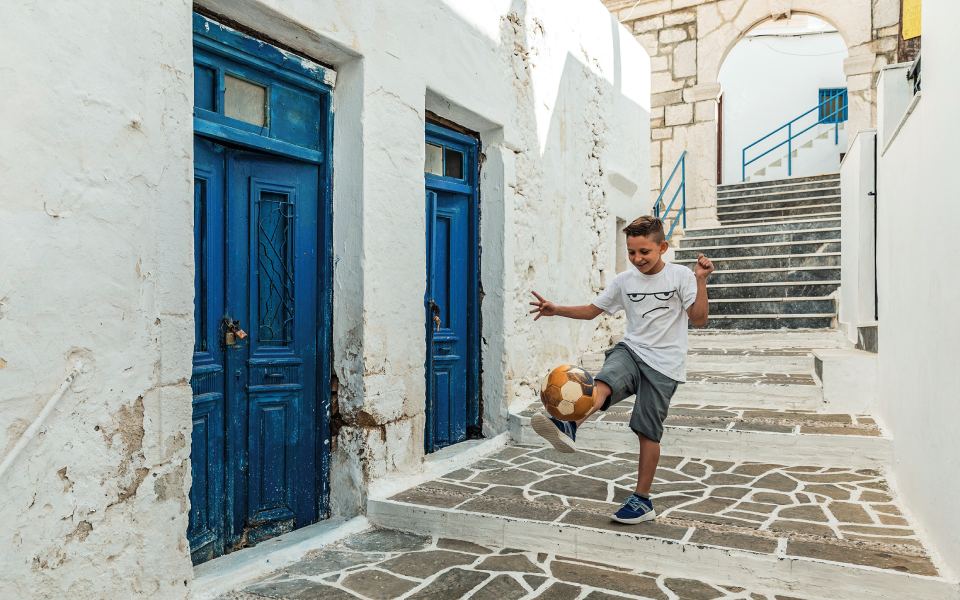
© Nicholas Mastoras
If you get chatting with a local, there’s a good chance you’ll get invited to their home even before they even get to know your name. Their homes are like museums and you’ll be treated like a long-lost niece who needs to learn about the family history through the embroideries that adorn the bed-sofas and the stories of the people in the sepia photographs. You’ll hear about the grandmother who was brought over from Kasos as a bride and had to learn to make her dolmades the local way. You’ll be told about another ancestor whose beehives were destroyed by the Italians to make way for a gun battery, and the account will be full of such raw emotion you’ll think it happened yesterday.
Making any kind of appointment is a waste of time. At night, we’ll meet somewhere in Pigadia. Someone will mention Saria and the next morning we’ll drive all the way north to the coast opposite that uninhabited islet. When we get there, I’ll tell myself that I don’t deserve a swim just yet and I’ll turn my back on the beach and head up to Palatia. Lost among the ancient fortifications, I’ll imagine Saracen pirates running around the ruins. Two falcons will show me the way to the Edi Gorge and then on to the Chapel of Aghios Zacharias. And there, looking at the sea from the top of the hill, I’ll proclaim “Saria, I have conquered you,” even though I know the real conquerors of that islet are some 2,500 goats stalking bathers on the beach, daring them to eat anything without giving them a taste first.
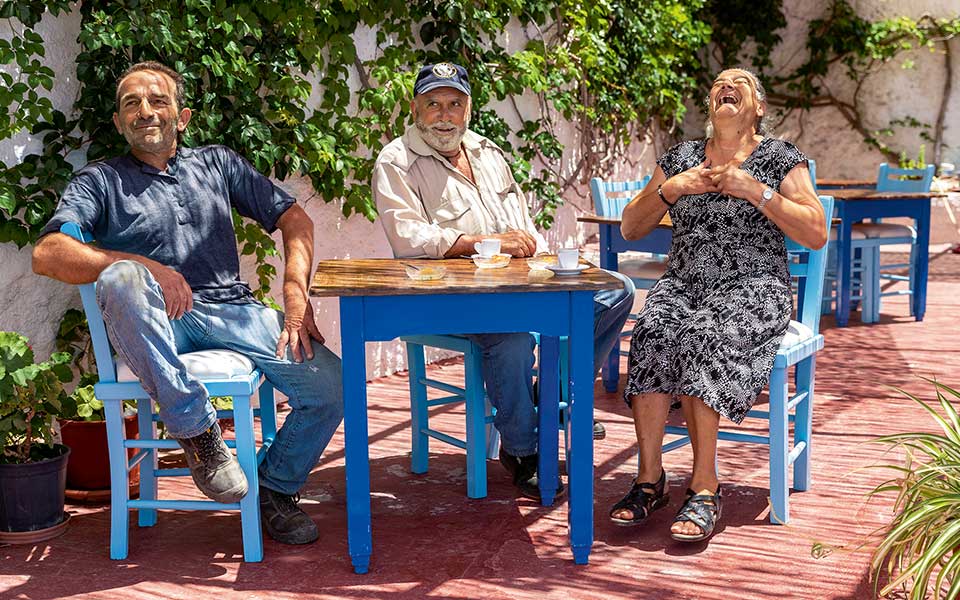
© Nicholas Mastoras
I’ll swim when I come down, going around the left-hand side of the bay, and through a hole that leads to a cavernous passage. I’ll put on my mask to admire the colorful kaleidoscopic rocks. It’ll make me yearn for a proper dive, for underwater labyrinths and shipwrecks, and, if I’m lucky, a turtle or a seal. If not here, where? I make a mental note to call Dinos at the dive center later.
Happiness is driving in a rental car in a cloud of dust to the turquoise waters of Diakoftis; it’s all the small and weird discoveries, like the ancient altar that serves as a baptismal font at the Aghia Sophia Church in Arkasa or the rock and seashell sculptures at Michaliou Kipos Beach; it’s the moment a woman in Olympos puts a traditional scarf on your head and says “Now you’re one of us;” it’s all this and so much more that comes like a dream, shortening the distance between Karpathos and London until the next trip.

